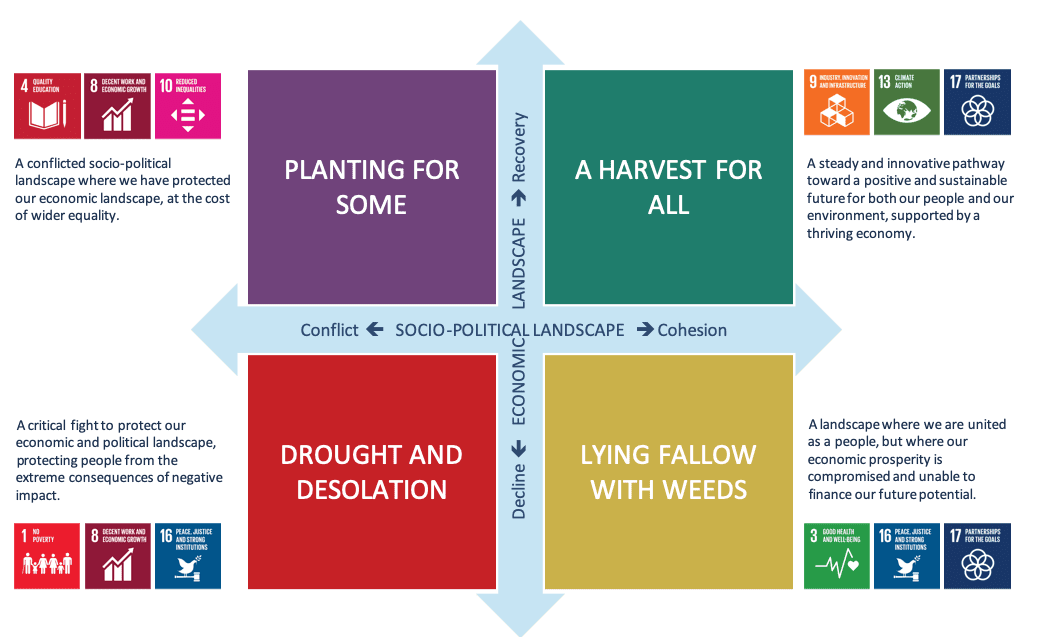SCENARIO PLANNING BEYOND THE COVID-19 PANDEMIC
Fuelling confident business action in an uncertain world.
Why do scenario planning?
As we begin to recover from the COVID pandemic, much uncertainty remains. What could the future look like and what could, and should business do? To understand this, the Global Compact Network South Africa undertook a scenario planning exercise and has developed a planning tool for business.
In developing the COVID and Post-Covid-19 scenarios for SA, we considered the economic and socio-political landscapes as the two key drivers of risk. Each of the possible four scenarios gives us insight into events as they unfold over time, enabling us to identify key signals and the response to take for each scenario.
What approach was used?
The first step was to determine two key and reasonably independent dimensions most significant to the evolving post-pandemic landscape. The two key drivers selected were the economic and the socio-political landscapes. Each of these variables has an extreme position in terms of outcomes with a range of possibilities in between.
This gave a matrix within which four broad scenarios could be built, forming a story of how they may evolve over time. The working group then collaborated to vision how events would lead to these scenarios over a five-year timeframe. The four scenarios the model presents are framed around 16 key “signals” that represent characteristics of the economic and socio-political landscapes.
Responses, options, actions, and triggers for action can then be distilled and developed for each scenario, enabling more detailed prioritisation and planning, based on plausibility.
What are the 4 possible scenarios?
By leveraging a model that considers impact from both a socio-political and economic perspective, we created a framework that can support how we address both positive opportunity and negative impact in the wake of the pandemic.
Covid-19 Response Model

How do we know which scenario we are in?
The model is supported by 16 signals that encapsulate key features of our landscape, which, collectively, we need to perform in order to achieve positive outcomes. Evaluating our evolving status on these drivers can help us to align and prioritise action.

What actions could and should Business take?
The GCNSA intention with this tool is to ensure that together with our stakeholders, we can navigate these scenarios, collectively build resilience, and take appropriate action necessary for a strong and inclusive recovery. The downloadable document is therefore a work in progress and will continue to be updated with valuable stakeholder input and feedback.

